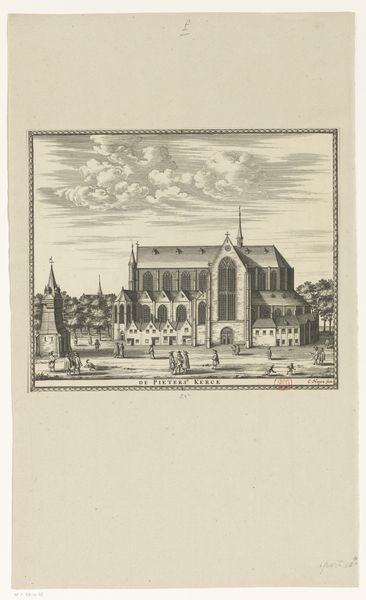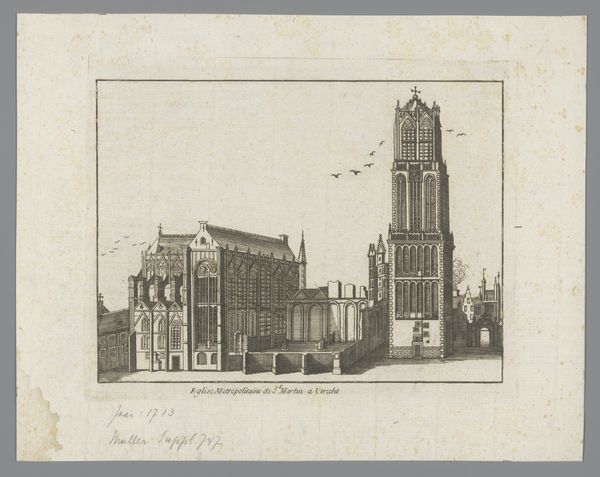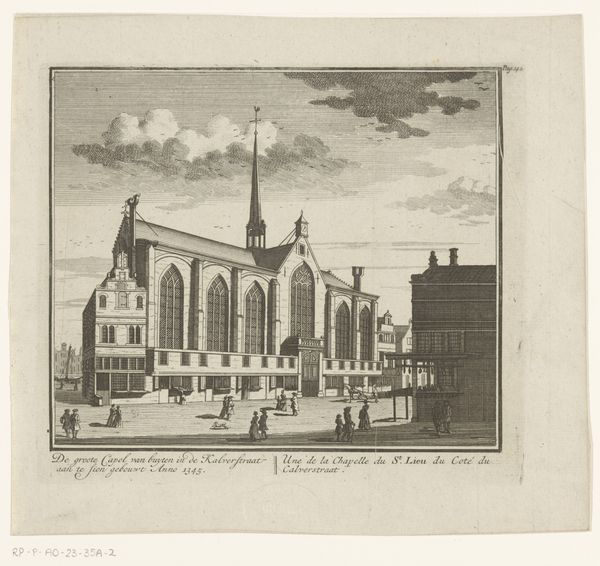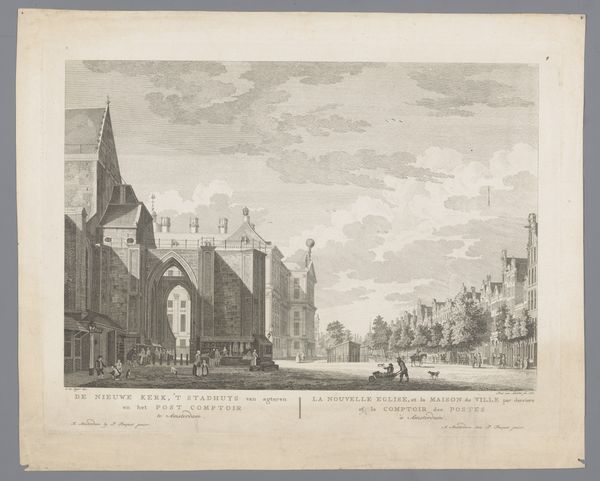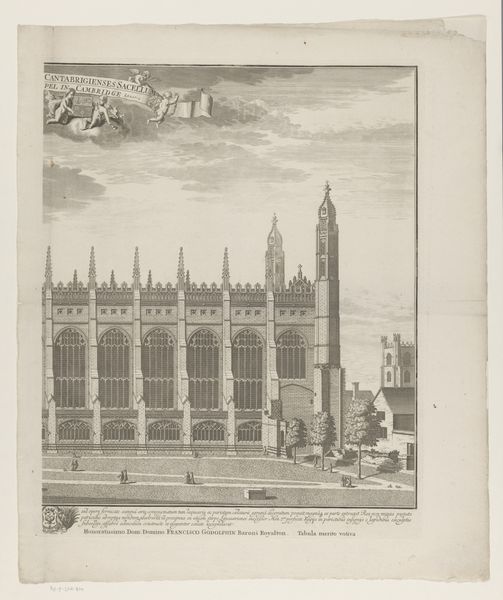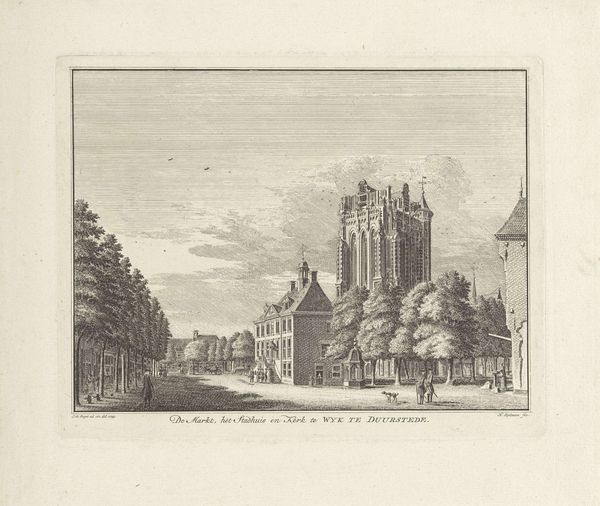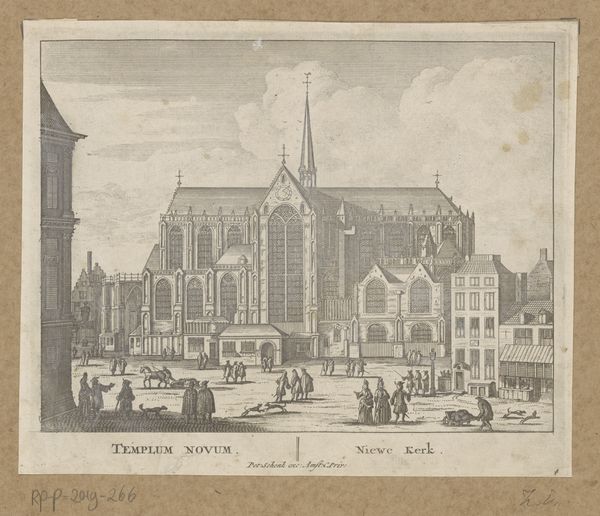
drawing, print, engraving, architecture
#
drawing
#
baroque
# print
#
old engraving style
#
cityscape
#
history-painting
#
engraving
#
architecture
Dimensions: height 250 mm, width 296 mm
Copyright: Rijks Museum: Open Domain
Curator: Here we have a striking example of Baroque printmaking, “Rand van de Grote Hagen (onderdeel zijkant)”, an engraving from around 1675 by Christiaan Hagen. Editor: My immediate reaction is to its formality. The meticulous details convey a sense of architectural precision. There's an objective quality, almost scientific in its rendering. Curator: It’s fascinating how Hagen has employed the engraving technique here. Notice how the density and direction of the lines create light and shadow, effectively modelling the three-dimensional form of the church. Editor: Indeed, and that precision hints at the labour involved in creating such detail. What sort of production apparatus allowed Hagen to conceive this image for distribution and consumption? Curator: As you suggest, it invites a discussion about labor and production. Consider how Hagen skillfully uses hatching and cross-hatching. Observe how this print would likely have been part of a larger series perhaps intended for the dissemination of architectural trends. Editor: That certainly speaks to Hagen's position within a system of production. The paper, the ink, the tools used for the engraving—they're all tied to material networks of supply, production, and sale. The city comes alive not just because of its stone buildings but also thanks to these interconnected economic forces. Curator: I'm more interested in the internal logic of the image. The repetition of forms, the way the arches and windows echo each other, is all creating rhythm. Editor: Yes, but even the rhythm is material. It reminds us of how repetitive, physical tasks went into making this intricate object; those tiny marks with precise instruments build a layered composition and bring the depicted reality into our presence. Curator: I’ll concede there is something grounding in how the artist forces the viewer to acknowledge the sheer human effort behind this intricate scene, a direct imprint of labor. Editor: I am happy to bring forth this kind of artwork; It invites us to see urban space through a network of resources and labor and allows a different viewpoint.
Comments
No comments
Be the first to comment and join the conversation on the ultimate creative platform.
